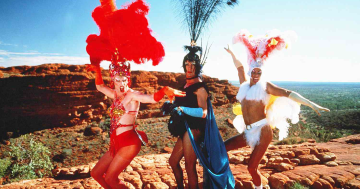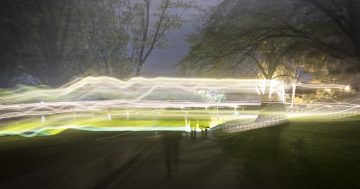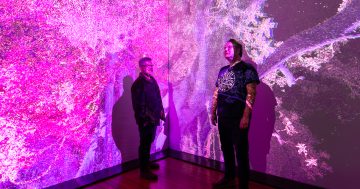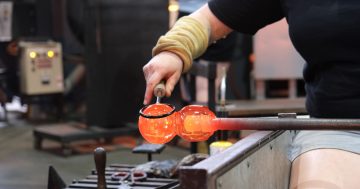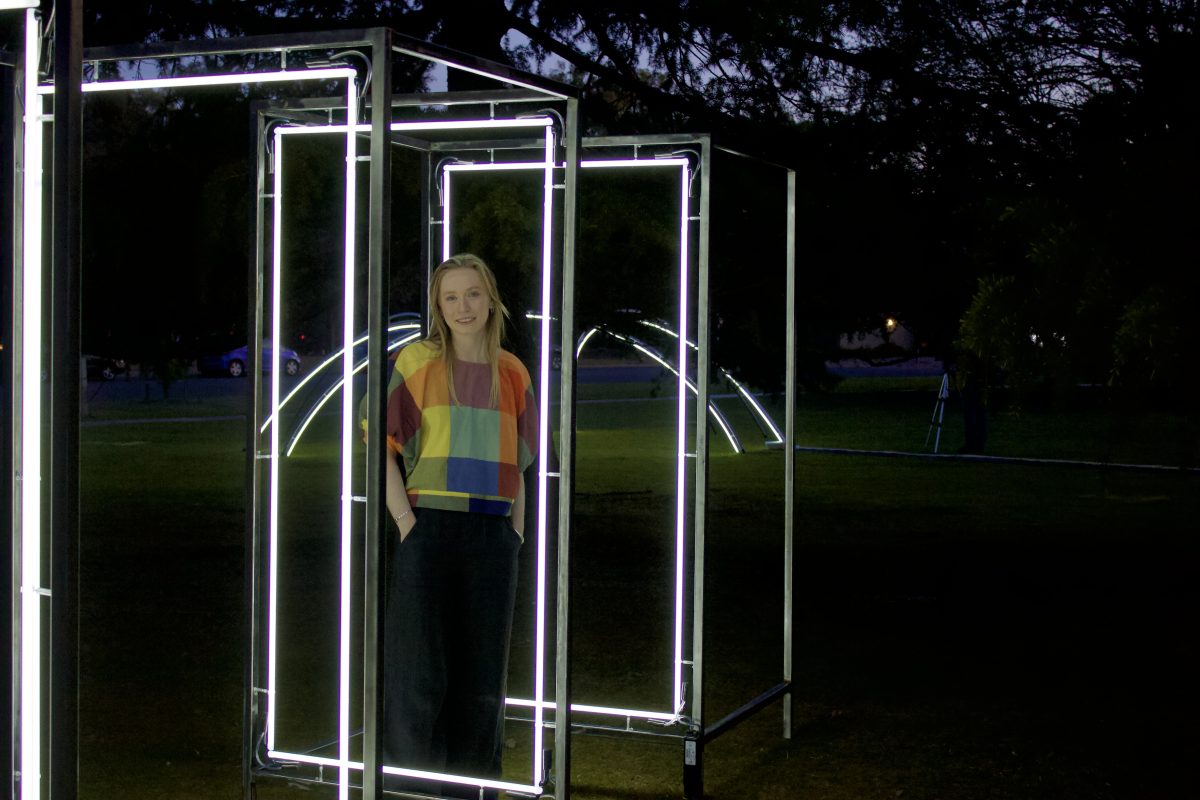
Sculptor Bronte Cormican-Jones inside her steel and neon installation outside Canberra’s National Film and Sound Archive. Photo: Brooke McEachern for Canberra Art Biennial.
When Bronte Cormican-Jones was commissioned by Canberra Art Biennial to create a sculptural installation for the grounds of the National Film and Sound Archive (NFSA), the iconic building’s interior was always going to take a starring role.
The art deco-style Canberra building has housed the nation’s audio-visual history since 1984 after starting its life as the Australian Institute of Anatomy.
From our first films to classic TV shows and earworm-worthy jingles and songs, the collection had a particular connection for the young artist – neon, the rich, bright light so familiar to audiences for attracting their attention.
Bronte, a sculptor who works on Garrigal traditional lands in Sydney, also trained and worked in Canberra so had developed an appreciation of the the unique NFSA building’s style, its collection and what it represented to the nation.
At the end of her artist-in-residence project at the Canberra Glassworks last year, Bronte presented a talk about her work – and was asked if she was interested in an installation project for the Canberra Biennial year.
The result is Of line, of light, a neon and steel sculptural installation that mirrors the architectural geometry in the area – the NFSA, the Nishi building and the Shine Dome.
For Bronte, 23, it’s her first public sculpture. Until now, her work has explored spatial practice through object, installation, performance and photography.
She said she was drawn to the architectural materials of glass, timber, steel and bricks because of how such industrial materials behaved in the gallery space. She was particularly interested in how her audience would respond to the infrastructure created around them.
With the artist keen to encourage audiences to move around the space and notice changes in their perception, the Canberra sculpture also explores relationships between architecture and the body.
“It’s the biggest project I’ve done so far,” she said of the series of lighting interventions that respond to the architecture of the site and the formal considerations of shape, line, intersection, space and perception.
“It was so exciting to be asked to work on the Canberra building, it was very special to me.
“I graduated from the Sydney College of the Arts in 2022 – the first year I did a residency in glass work and studied overseas as well. That’s when I started working with neon and I’ve been working with it ever since.”
Bronte welded a huge series of steel elements to act as sculptural frameworks for the installation – and the neon lighting comes alive at night.
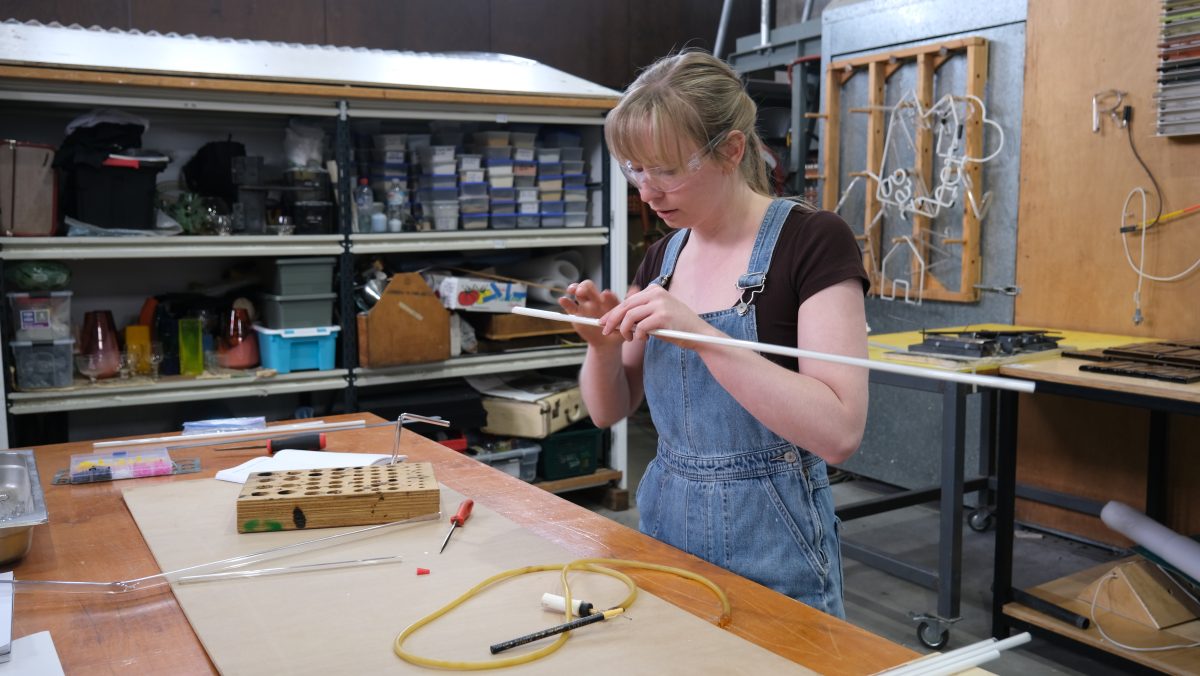
Sculptor Bronte Cormican-Jones works on the Canberra Biennial project in the studio. Photo: Kevin Miller for Canberra Art Biennial.
She designed the neon installation to invite movement from its viewers, shifting from different perspectives. At one point, she says, the shapes appear to converge with one another, or nest in concentric patterns. Before the neon frames intersect, they cut into new spaces opening the field of vision to the world outside the rectangle.
“I call myself a sculptor because I studied it at uni, but I’ve always been drawn to working with glass,” she said. “Especially the way it is used in architecture.”
She attributed this passion for neon to David Cooper and the skills she has learned from the master craftsman. “I was drawn to it as a light source because it has such a rich history.
“It has been wonderful to go through the NFSA’s archival material to see how neon has been used over the years with signage – it has connected so well with this project. There is a real energy about working with neon, a real buzz about it.”
Hear Bronte Cormican-Jones in conversation with neon master craftsman David Cooper and architect Savita Gaonkar this Sunday, 6 October, from 3 pm at the NFSA. Free event but bookings recommended.












